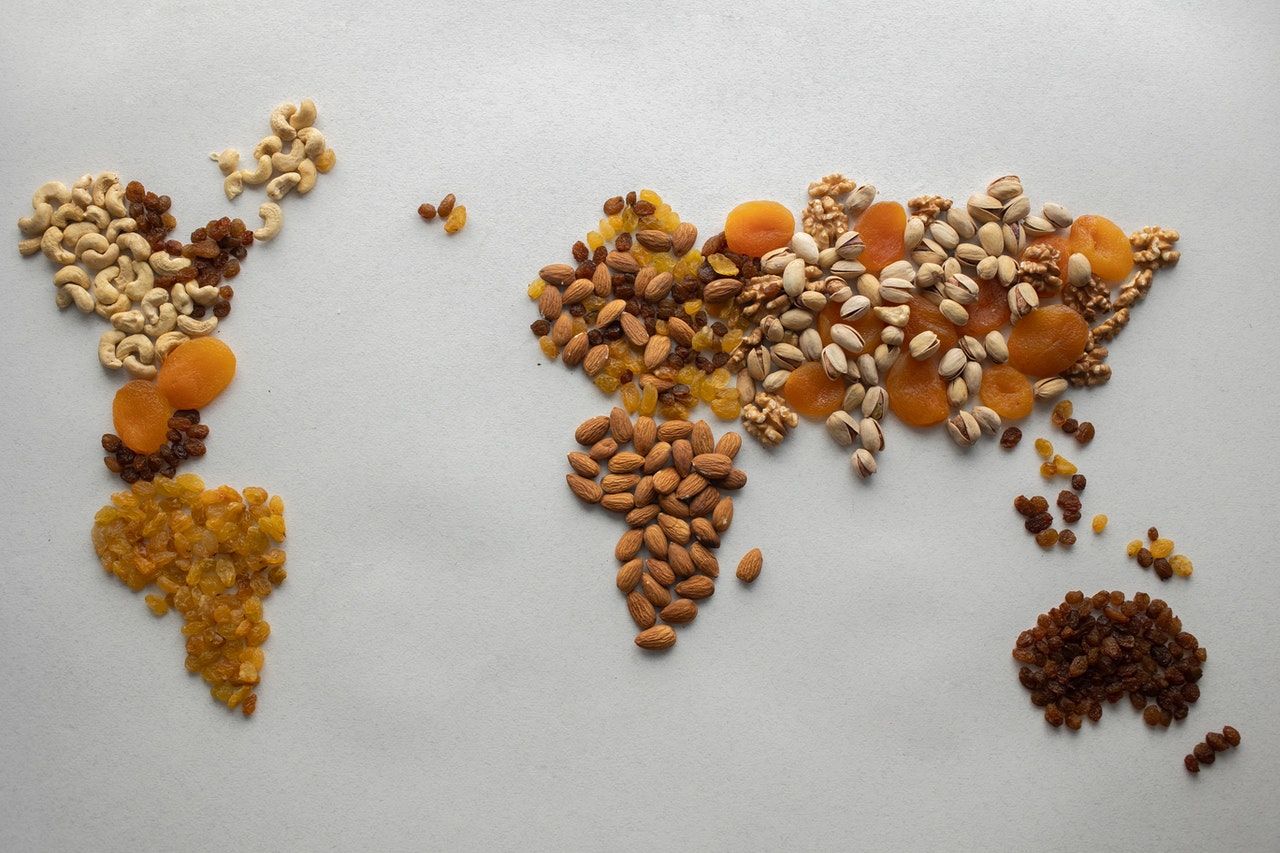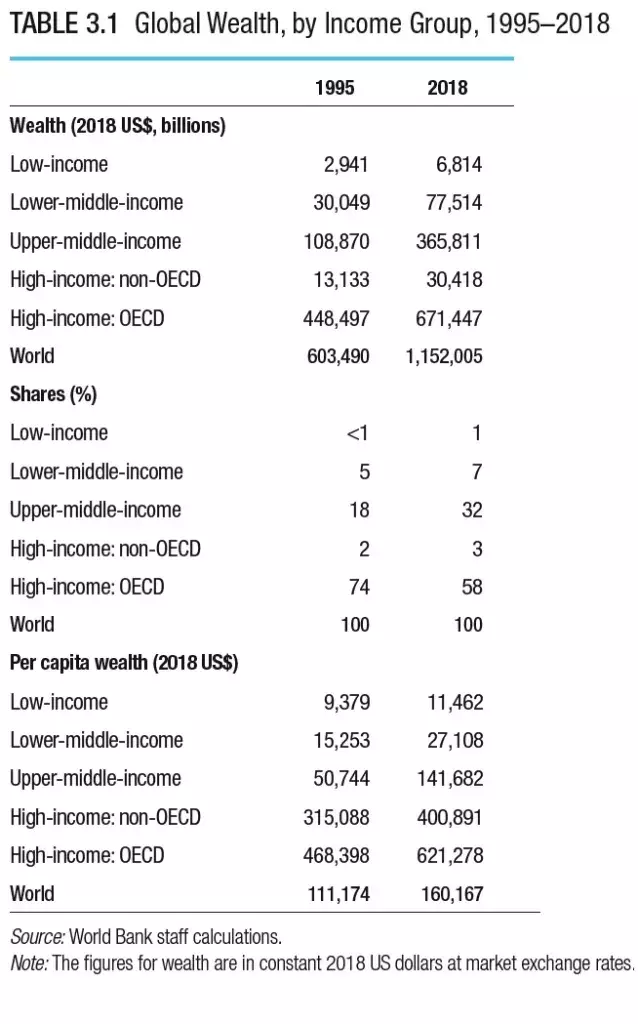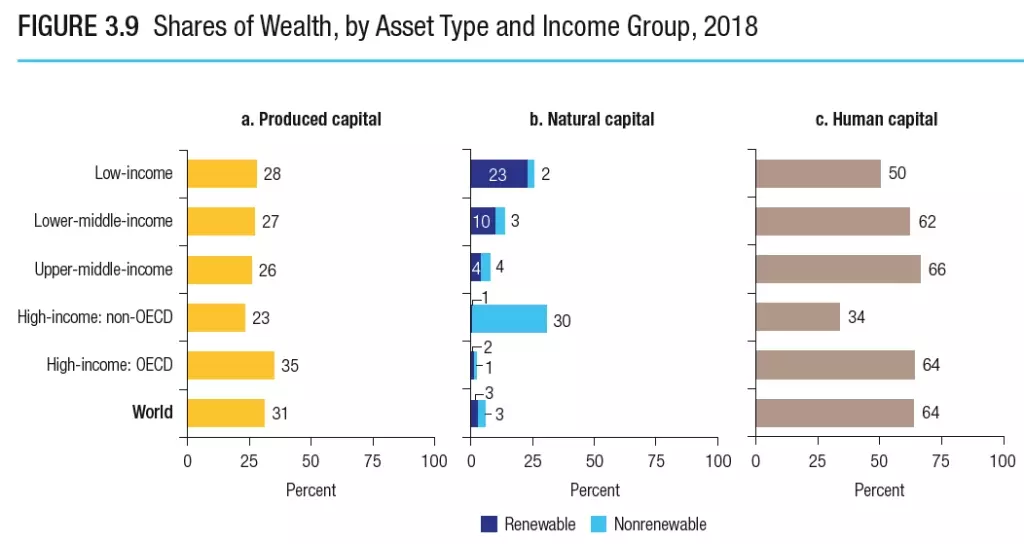Comments
- No comments found

The wealth of a society is so much more than the value of houses, or the stock market, or retirement accounts.
Wealth broadly understood should also include endowments of nature, ranging from wilderness to oil wells, as well as the human capital embodied in the education and skills of its people. Every few years, the World Bank takes on the task of measuring the world’s wealth in these broader ways. The most recent set of estimates appear in The Changing Wealth of Nations 2021 : Managing Assets for the Future.
Just to be clear, wealth represents an accumulation over time. This is different from GDP, which is the amount produced in a given year. Thus, world GDP in 2018 was about $86 trillion, but world wealth as estimated in this report was 13 times bigger at $1,152 trillion. Here are some estimates from “Chapter 3: Global and Regional Trends in
Wealth, 1995–2018,” by Glenn-Marie Lange, Diego Herrera, and Esther Naikal.
Here is how wealth was distributed around the world between countries of different income levels (I have left out some intermediate years in the table):

High-income countries like the US have about four times the per capita wealth of upper-middle income countries like Brazil, China, and India; about eight times the per capita wealth of lower middle-income countries like Nigeria, Indonesia, and Egypt; and 18 times the per capita wealth of lower-income countries like Uganda, Syria, and Ethiopia.
Again, the wealth being discussed here is not just financial or in the form of machinery and buildings, but includes the value embodied in natural and human resources.

However, countries with different income levels also tend to differ on the form of their wealth. The low-income countries in the top row have 23% of their wealth in the form of natural capital. The high-income non-OECD countries, who tend to be big oil producers and exporters, have almost one-third of their wealth in the form of nonrenewable natural capital. The high-income and upper-middle income countries (this second category driven largely by China) has about two-thirds of its wealth in human capital.

There are of course roughly a jillion ways to quarrel with these kinds of calculations: for those who wish to do so, I commend the detailed discussion of the World Bank volume and the underlying working papers to your attention. Here, I’ll just emphasize a few points.
Timothy Taylor is an American economist. He is managing editor of the Journal of Economic Perspectives, a quarterly academic journal produced at Macalester College and published by the American Economic Association. Taylor received his Bachelor of Arts degree from Haverford College and a master's degree in economics from Stanford University. At Stanford, he was winner of the award for excellent teaching in a large class (more than 30 students) given by the Associated Students of Stanford University. At Minnesota, he was named a Distinguished Lecturer by the Department of Economics and voted Teacher of the Year by the master's degree students at the Hubert H. Humphrey Institute of Public Affairs. Taylor has been a guest speaker for groups of teachers of high school economics, visiting diplomats from eastern Europe, talk-radio shows, and community groups. From 1989 to 1997, Professor Taylor wrote an economics opinion column for the San Jose Mercury-News. He has published multiple lectures on economics through The Teaching Company. With Rudolph Penner and Isabel Sawhill, he is co-author of Updating America's Social Contract (2000), whose first chapter provided an early radical centrist perspective, "An Agenda for the Radical Middle". Taylor is also the author of The Instant Economist: Everything You Need to Know About How the Economy Works, published by the Penguin Group in 2012. The fourth edition of Taylor's Principles of Economics textbook was published by Textbook Media in 2017.
Leave your comments
Post comment as a guest